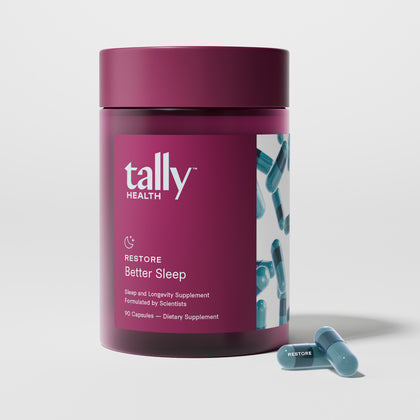

We spend approximately one-third of our lives asleep, and up to 25% of that time is devoted to rapid eye movement (REM) sleep—when most dreaming occurs [1]. REM sleep is also known as the 'rapid eye movement sleep' stage and is a distinct sleep stage within the broader sleep cycle. REM sleep is one of several sleep stages that make up normal sleep, and these sleep cycles repeat throughout the night. In an 8-hour sleep cycle, that equates to nearly two hours of dreaming per night, or more than five years of dreaming over the course of a lifetime. Newborns spend about half of their sleep in REM, and how much REM sleep we get changes with age.
Despite the centrality of the REM sleep stage to human biology, the purpose of dreaming has long remained a mystery. However, mounting evidence suggests dreams are deeply connected to memory consolidation, emotional processing, and even long-term brain health. REM sleep contributes to brain development, especially in early life, and is a critical component of normal sleep cycles. In fact, reduced REM sleep has been linked to memory decline, increased emotional reactivity, and a heightened risk of Alzheimer’s disease and mortality [2][3]. REM sleep supports overall well-being, longevity, and cognitive function.
Optimizing REM sleep isn’t just about better dreams—it’s critical for long-term health, and it’s one reason we created Restore, Tally Health’s supplement designed to support deep, restorative sleep.
Why do we dream?

Some dreams are comforting; others, bizarre. But many of us dream about similar themes: falling, flying, being chased, or losing our teeth [4]. The question remains—why?
While dream research is inherently difficult due to its reliance on subjective reporting, neuroscience has provided compelling clues. One study found that emotionally charged daytime experiences were associated with stronger theta wave activity during REM sleep—a brainwave pattern critical for learning and memory [5][6][7].
Dreams may allow us to emotionally “digest” these experiences by helping us process feelings, and the emotional impact of dreams can often be felt even after waking. A lack of REM sleep impairs our ability to interpret social cues and regulate emotional responses [8]. In other words, dreams may serve as a simulated environment where we rehearse emotional experiences, boosting our resilience in waking life [9]. There is a significant relationship between dreaming and emotional regulation, which may also enhance our problem solving abilities by allowing us to approach challenges with improved insight and adaptability.
Even strange dreams may serve an adaptive function. In one study, dreams containing bizarre, unpredictable content were shown to improve abstract learning, suggesting an evolutionary benefit to dream “weirdness” [10].
Where Do Dreams Come From? How the Brain Builds a Dream

Dreams aren’t static. Before the 1950s, most people reported dreaming in black and white. By the 1960s—coinciding with the rise of color television—dreams became more colorful [11]. Researchers believe this reflects increased visual cortex stimulation from our environment [12].
Advanced imaging now allows scientists to map dream-related activity in real time. During vivid dreaming, the hippocampus (memory), amygdala (emotion), and right inferior lingual gyrus (visual and emotional integration) all light up [13][14][15]. Brain activity during REM sleep is similar to wakefulness, with complex patterns that support the vividness and realism of the dream environment. Neural networks involved in self-reflection and metacognition are active during dreaming, supporting both lucidity and the construction of the dream environment. Remarkably, individuals with damage to the inferior lingual gyrus often report a complete cessation of dreams, emphasizing this region’s importance.
The Benefits of Lucid Dreaming (and How It Works)

Lucid dreaming—a state where the dreamer becomes aware they are dreaming—activates brain regions that are typically “offline” during REM sleep. These include the prefrontal cortex, which governs logic, and the parietal lobe, responsible for sensory information [16][17]. A lucid dream occurs when the dreamer realizes they are dreaming, leading to heightened consciousness and the potential for greater control over the dream experience.
This hybrid brain state shows promise for mental health. In one pilot study, lucid dreaming training helped reduce insomnia symptoms [16]. Lucid dreaming can also be used to confront nightmares and traumatic experiences, and has been explored as a tool in sleep medicine for managing nightmares. Other research links lucid dreamers to increased creativity [18] and even enhanced motor skill performance. For example, athletes who practiced physical skills in lucid dreams improved more than those who practiced mentally or not at all [19]. There are also examples of lucid dreamers using their dreams to practice skills, solve problems, or recreate experiences from video games.
The relationship between lucid dreaming, feelings of empowerment, and emotional regulation is significant, as these feelings can be felt in waking life. However, some individuals may experience reality confusion, where distinguishing between dreams and waking life becomes difficult, especially after vivid lucid dreams. Lucid dreaming has also been shown to enhance problem solving abilities and provide insight into personal challenges. Some people report feeling more awake or alert after a lucid dream, while others may feel tired or emotionally affected.
Can’t Remember Your Dreams?

Even if you don’t remember your dreams, you almost certainly have them. People spend an average of two hours per night dreaming [20]. But why do some remember dreams easily while others struggle?
Studies suggest brain anatomy may play a role. People who recall dreams frequently tend to have more white matter in the medial prefrontal cortex, an area linked to emotion and memory [21]. These individuals also exhibit increased responsiveness to sounds during sleep, a sign of heightened awareness in the temporoparietal junction—an empathy- and perception-related brain region [22][23].
Brief awakenings of 2–3 minutes during the night—especially at the end of REM cycles—may also enhance dream recall by allowing memories to shift from short-term to long-term storage [23].
Science-Backed Tips to Fall Asleep Faster and Improve Sleep Quality

Getting enough sleep is crucial—but it’s the quality of your sleep that most directly influences mood, memory, and dream health. Maintaining a consistent bedtime and sleep-wake schedule, even on weekends, supports normal sleep and healthy REM cycles. Certain medications, alcohol, and caffeine can disrupt sleep quality and lead to less REM sleep. If you have trouble falling asleep, try getting out of bed and spending time in another room before returning to sleep. Sleep disorders and other conditions can also cause less REM sleep, but treating sleep disorders can improve overall sleep quality. Poor sleep can leave you feeling tired or make you feel sleepy during the day, while good sleep hygiene helps you feel more awake and alert. Sleep disruption can result from many causes, so sleeping in a comfortable environment is important. Here are six evidence-based ways to improve your deep and REM sleep:
Get Outside in the Morning Sunlight
Light is the strongest cue for regulating your circadian rhythm. Exposure to morning sunlight resets your biological clock and boosts melatonin production at night—especially in older adults, who often produce less [21]. Just 20–30 minutes outside can help improve sleep duration, efficiency, and timing. Bonus: it also lowers stress and cortisol levels [22][23].
Support a Healthy Gut Microbiome
Your gut bacteria influence serotonin production—over 90% of serotonin is made in the gut—and serotonin is a precursor to melatonin [24]. Studies show that people with higher levels of Bacteroidetes and Firmicutes sleep more efficiently, while higher levels of certain other microbes like Lachnospiraceae and Corynebacterium are linked to poor sleep [24]. Prioritize fermented foods (e.g., yogurt, kimchi, and sauerkraut), fiber, and diverse plant-based food intake [25].
Prioritize Daily Exercise
Physical activity increases the body's need for sleep. Just 30 minutes of moderate aerobic exercise during the day can improve sleep that same night—even in people with chronic insomnia [26]. Exercise also increases time spent in deep, restorative slow-wave sleep.
Eat More Fiber, Fewer Saturated Fats
Fiber intake is associated with more time in deep sleep, while diets high in sugar and saturated fats are linked to lighter, more fragmented sleep [27][28][29]. Aim for 25–30g of fiber per day, mostly from whole grains, vegetables, legumes, and fruits.
Swap Animal Protein for Plant-Based Protein
A recent study found that plant-based diets may indirectly improve sleep quality by lowering depressive symptoms [30]. Another found that plant protein improved sleep more than animal protein, potentially due to lower saturated fat content and faster digestion [31]. Try incorporating lentils, tofu, tempeh, or quinoa into your dinner. Fun fact: whole grains have substantially more protein than refined grains.
Nap Strategically—Not Excessively
While short naps (20–30 minutes) can boost mood and cognition [32][33][34], frequent or prolonged napping is linked to a poor nighttime sleep schedule and even increased depression risk in midlife adults [35]. The optimal nap window is between 1–3 PM and should be kept under 30 minutes [36].
Support Deeper Sleep with Restore by Tally Health

Want to give your sleep and cellular health a nightly advantage? Enter Restore—Tally Health’s sleep supplement designed to support the body’s natural circadian rhythms and optimize sleep architecture.
Restore is formulated to:
Promote the natural production of melatonin
Leverage an active compound in chamomile
Influence the inhibitory neurotransmitter GABA
Support healthy aging as you sleep.
Whether you’re looking to increase dream recall, extend REM cycles, or simply wake up feeling more refreshed—Restore supports the biology behind better
Why do we dream?
Dreams may help us emotionally “digest” our experiences by processing feelings and improving our ability to interpret social cues and regulate emotional responses. They might also serve as a simulated environment where we rehearse emotions and problem-solving, which can boost resilience in waking life.
What causes weird dreams—and do they serve a purpose?
Even strange or bizarre dreams may be beneficial. One study found that dreams containing unpredictable content improved abstract learning, suggesting an evolutionary advantage to dream “weirdness.”
Why don’t I remember my dreams?
Even if you don’t remember them, you almost certainly dream. People who recall dreams more frequently tend to have more white matter in areas of the brain linked to emotion and memory, and they may also be more responsive to sounds during sleep. Brief awakenings during the night—especially at the end of REM cycles—help move dreams from short- to long-term memory.
Recommended Supplements
Citations
Aminoff MJ et al. Handbook of Clinical Neurology. 2011;98:vii. https://doi.org/10.1016/B978-0-444-52006-7.00047-2
Mathangi DC et al. Ann Neurosci. 2012;19(4):161–164. https://doi.org/10.5214/ans.0972.7531.190405
Leary EB et al. JAMA Neurol. 2020;77(10):1–12. https://doi.org/10.1001/jamaneurol.2020.2108
Garfield P. The Universal Dream Key. HarperSanFrancisco; 2001.
Eichenlaub JB et al. Soc Cogn Affect Neurosci. 2018;13(6):637–647. https://doi.org/10.1093/scan/nsy041
Seger SE et al. Neuron. 2023;111(19):3119–3130.e4. https://doi.org/10.1016/j.neuron.2023.06.015
Addante RJ et al. PNAS. 2011;108(26):10702–10707. https://doi.org/10.1073/pnas.1014528108
Gujar N et al. Cereb Cortex. 2011;21(1):115–123. https://doi.org/10.1093/cercor/bhq064
Scarpelli S et al. Front Psychol. 2019;10:459. https://doi.org/10.3389/fpsyg.2019.00459
Deperrois N et al. eLife. 2022;11:e76384. https://doi.org/10.7554/eLife.76384
Murzyn E. Conscious Cogn. 2008;17(4):1228–1237. https://doi.org/10.1016/j.concog.2008.09.002
Eagleman DM, Vaughn DA. Front Neurosci. 2021;15:632853. https://doi.org/10.3389/fnins.2021.632853
Gennaro LD et al. Hum Brain Mapp. 2011;32(9):1458–1470. https://doi.org/10.1002/hbm.21120
Bischof M, Bassetti CL. Ann Neurol. 2004;56(4):583–586. https://doi.org/10.1002/ana.20246
Bennion KA et al. Cogn Affect Behav Neurosci. 2017;17(2):290–304. https://doi.org/10.3758/s13415-016-0479-3
Ellis JG et al. Behav Sleep Med. 2021;19(2):273–283. https://doi.org/10.1080/15402002.2020.1739688
Voss U et al. Sleep. 2009;32(9):1191–1200. https://doi.org/10.1093/sleep/32.9.1191
Zink N, Pietrowsky R. Int J Dream Res. 2013;6(2):98–103.
Stumbrys T et al. J Sports Sci. 2016;34(1):27–34. https://doi.org/10.1080/02640414.2015.1030342
National Institute of Neurological Disorders and Stroke. Brain Basics: Understanding Sleep. https://www.ninds.nih.gov/
Mishima K et al. J Clin Endocrinol Metab. 2001;86(1):129–134. https://doi.org/10.1210/jcem.86.1.7097
Harvard Health Publishing. A 20-minute nature break relieves stress. 2019.
Shanahan DF et al. Sci Rep. 2016;6:28551. https://doi.org/10.1038/srep28551
Barandouzi ZA et al. Sci Rep. 2022;12(1):1–11. https://doi.org/10.1038/s41598-022-05756-0
Weaver J. Stanford Medicine News Center. July 2021.
Gamaldo C. Exercising for better sleep. Johns Hopkins Medicine.
McKeown NM, Slavin J. BMJ. 2022;378:e054370. https://doi.org/10.1136/bmj-2020-054370
Zhang S et al. Ann Med. 2023;55(1):558–571. https://doi.org/10.1080/07853890.2023.2176541
St-Onge MP et al. J Clin Sleep Med. 2016;12(1):19–24. https://doi.org/10.5664/jcsm.5384
Wang X et al. Sci Rep. 2023;13:1–9. https://doi.org/10.1038/s41598-023-33912-7
Wirth J et al. Eur J Clin Nutr. 2024;78(5):413–419. https://doi.org/10.1038/s41430-024-01414-y
Goldschmied JR et al. Pers Individ Dif. 2015;86:164–167. https://doi.org/10.1016/j.paid.2015.06.013
Romdhani M et al. Biol Sport. 2021;38(4):629–638. https://doi.org/10.5114/biolsport.2021.103569
Shaikh N, Coulthard E. J Sleep Res. 2019;28(1):e12728. https://doi.org/10.1111/jsr.12728
Liu Y et al. BMC Public Health. 2018;18:5629. https://doi.org/10.1186/s12889-018-5629-9
Pacheco D. Does Napping Impact Your Sleep? Sleep Foundation. 2024.











